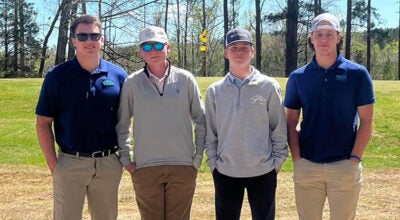The Garden Muse — Native plant species and their importance in the landscape
Published 1:24 pm Saturday, March 12, 2022
|
Getting your Trinity Audio player ready...
|
Hang around gardeners long enough and inevitably the topic of native plants will come up in conversation. The USDA defines a native plant as ‘A plant that is part of the balance of nature that has developed over hundreds or thousands of years in a particular region or ecosystem.’ Only plants growing in this country before European settlement are native species to the United States. However, discoveries of human migration across continents in the distant past continue and it would not surprise me if some of what are now considered native plant species in this country have their status updated.
Most of the ornamental plants sold at garden centers and nurseries today are non-native to the U.S. Non-native plant species are those which have been introduced to a place or new habitat that they previously did not exist in by humans. Not all non-native species of plants are invasive, in fact many require continued human help to reproduce and maintain themselves in the environment. The few non-natives that have the ability to maintain themselves and reproduce over time without continued help from humans are labeled Naturalized. A naturalized plant species will never be considered a native species.
Both non-native and naturalized plant species can be labeled as Invasive. Invasive plants grow quickly and can adapt and establish themselves in many landscapes. They will spread to the point of disrupting and eradicating existing plant communities and eco systems.
The benefits of native plants in the landscape are many. A few especially important ones to consider are, they save water. Native plants once established require much less water to maintain in the landscape. In the garden they require minimal if any irrigation. Lower maintenance is another benefit to planting native species. They have built in survival mechanisms that have evolved over time to protect them in their environment, because of these pesticides are not needed with native plant species. Most have developed complex chemical deterrents in their genetic makeup to keep the pests at bay. They support local ecology and wildlife. Many pollinators and animals are dependent on particular native plant species for food, shelter and to reproduce. They also can contribute greatly to healthy soil and water in both rural and urban areas.
I know the exotic beauty of non- natives can be hard to resist., I have a few in my gardens that I admire every year. But I hope you will consider adding a few natives to your mix next time you shop for plants. The local ecosystem and wildlife will be incredibly grateful indeed.
Dawn Conrad is a Virginia Cooperative Extension Master Gardener, Herbal enthusiast, Writer and Fiber Artist. She can be contacted at dawn@mygardenmuse.com.




